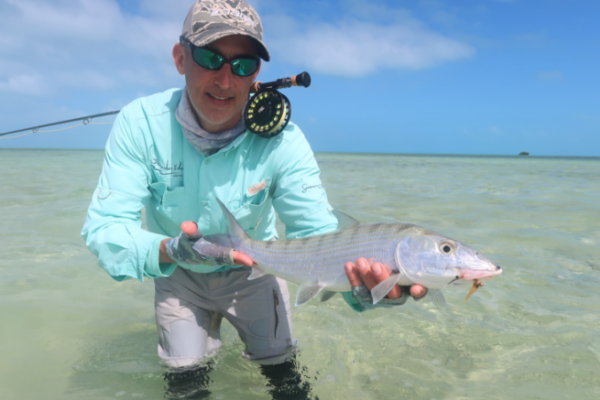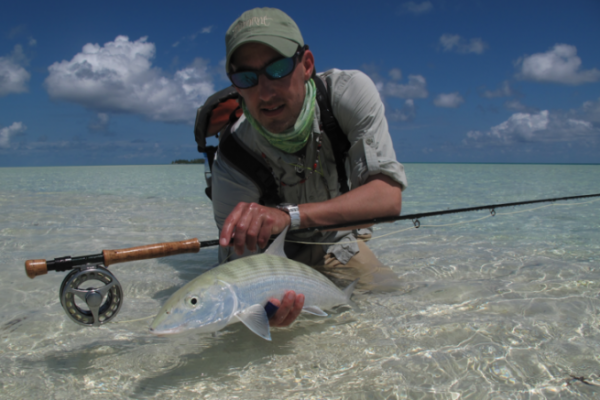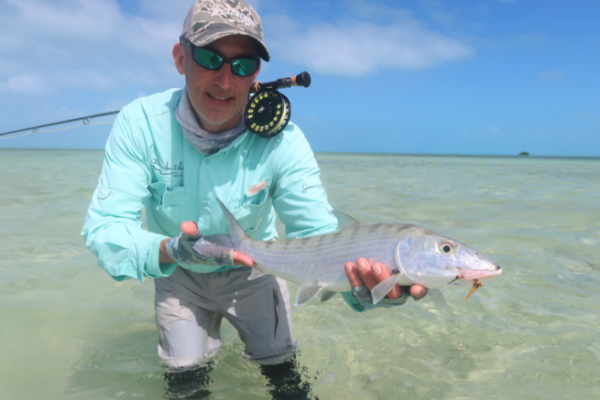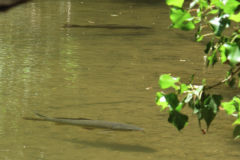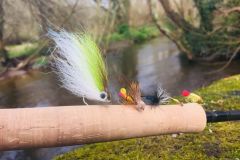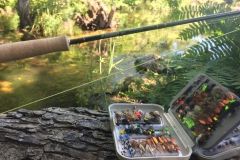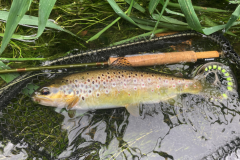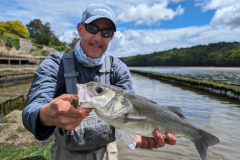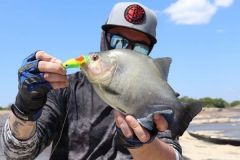Fishing situations and conditions
Bonefish are mainly caught on sight in shallow water, whether on flats, beaches, mangrove swamps or any other environment. However, in certain circumstances, they can be found in deeper water.
For each environment, one or more types of flies will be more appropriate in terms of size, weight, color and pattern.
Fishing conditions can be varied, which also requires adapting to have the right flies: fishing in very little water or more water, fast-moving fish, groups of fish or single fish, tailing fish, etc...
Also, at certain destinations, fish are more wary, more solicitous, or even more selective, so you'll have to fish them more discreetly by playing on presentation distance, but also on the weight and type of flies.
In some cases, using flies different from those commonly used can make all the difference. Use a small crab instead of an imitation shrimp, for example. Go down in fly size. Use duller and/or more imitative flies.
It's always good to have a wide selection of flies to cope with all these situations.
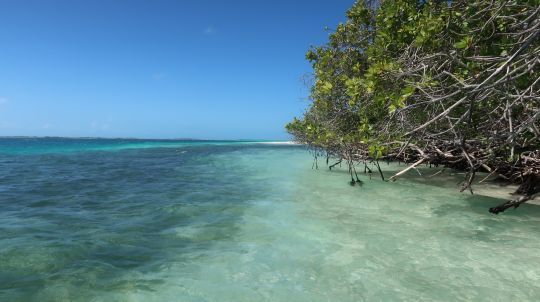
Choosing the right size and color of flies
The color of the fly will depend mainly on the color of the bottom on which the bonefish will be sought. Its prey will adopt camouflage colors to conceal themselves from their predators, and will therefore have colors close to those of their living environment.
Bonefish are mostly caught on sandy, sandy-muddy bottoms and also on bottoms covered with aquatic vegetation, notably turtle grass.
You'll need to use flies with colors close to those of the background, very often tan and olive. Use tan or light colors on light backgrounds, and olive or darker flies on dark backgrounds.
Small touches of bright colors (orange, pink, chartreuse in particular) on the fly can also trigger interest in certain cases or imitate the prey of this predator which feeds mainly on shrimps and crabs, but also on small worms, molluscs and small fish. These colors are added in the fly's assembly, either by the addition of a tag (tail), or a colored head, or in the fibers and hairs used.
The size of the flies will depend on the prey encountered on the fishing spot, but also on the distrust of the fish. It's important to observe or ask around.
In the Bahamas, flies are often small (hooks 8 and 6). In other destinations, however, they will be much larger because the food will be larger, or they will be less wary.
In New Caledonia, Los Roques and Florida, for example, flies are often mounted in sizes 4 and 2 or even larger, corresponding to the size of local prey.
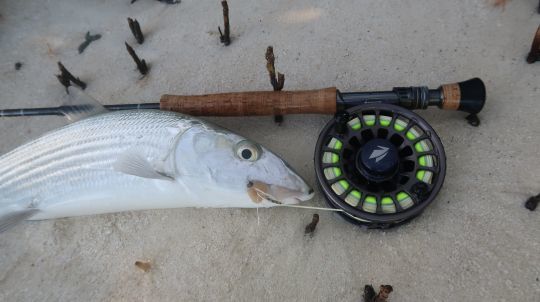
Vary the weight of the flies
The weight of the flies is also very important and should be adapted to the depth of the fishing area, but also in some cases to the current. Bonefish feed on rising and falling tides, which set their prey in motion.
Fish wariness may be a factor to take into account, as a weighted fly will make more noise on impact with the water and may scare off some fish. A lighter fly, on the other hand, will be more discreet and will be able to overcome the mistrust of fearful fish.
You can also play on the distance of the landing in relation to the movement of the fish(es) to be more discreet. You can also lengthen the tip.
You will therefore need to mount flies with different ballast weights for all the models you use.
- Unweighted for fishing in very little water or tailing fish
- With light ballast (small washbasin chain) under the same conditions as above
- With slightly heavier ballast (medium to large washbasin chain) in most cases
- Even heavier for fishing in more water or currents (using altere or diabolo eyes) which will quickly color the fly on the bottom.
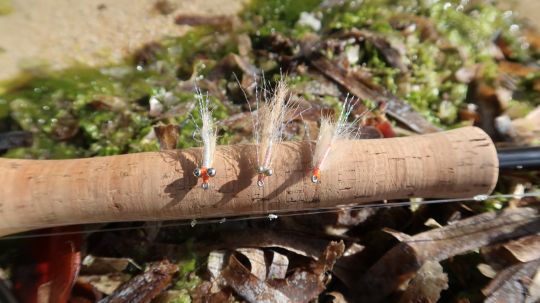
Important tips for bonefish fishing
In every situation you'll have to be observant and constantly adapt your flies to the behavior of the fish, but also to your results, which will let you know if you're doing the right thing or not. Playing with ballast will certainly help you catch more fish.
It's important to know that bonefish feed mainly on the bottom and that your flies will have to swim close to it. Even if you cast quickly to trigger a strike, for food competition in the case of a group of fish, remember to pause to let your fly drop back to the bottom. The fly is often gripped at this point or during the descent phase to the bottom.
Keep in close contact with your fly by exercising your strips to feel the bites, or by observing the behaviour of the fish, which often tilts downwards when it takes the fly. You can often feel a slight tension in the leader, but not all the time.
Above all, use the fly line to make a long pull, and don't lift your rod too early to avoid missing the fish by taking the fly out of its mouth. And if the fish hasn't caught or released, it will find your fly just a little further away and this will give it another chance to get back on it, which is very common.
In the event of regular refusals, think about changing your tippet size (fish finer), change your fly pattern to find an imitation that will be more gripping, vary your animations, because if they are too slow, or conversely too fast, it can make a big difference.

